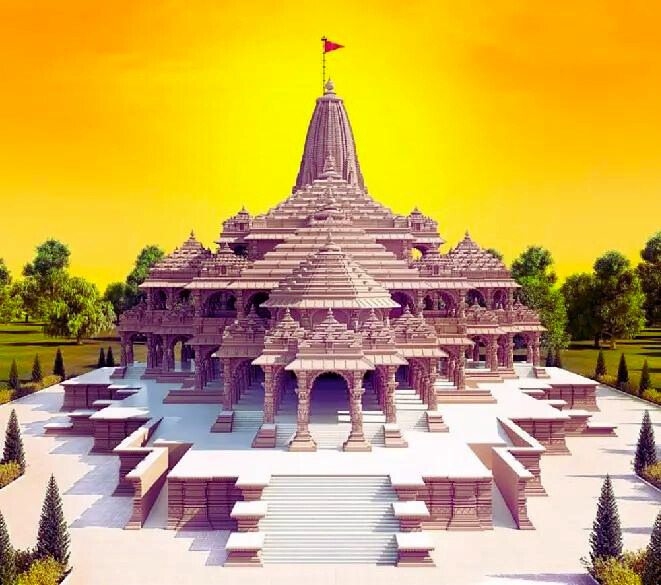
The Indian state of Uttar Pradesh is home to the historic, cultural, and spiritually significant city of Ayodhya. Here is a list of 15 beautiful locations in Ayodhya that you should not miss:
Ram Janmabhoomi: One of the holiest places for Hindus, this is thought to be the birthplace of Lord Rama. The Ram Janmabhoomi temple complex is the main draw here.
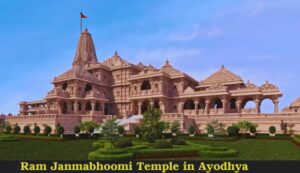
Hanuman Garhi: Perched on a hill, this temple honouring Lord Hanuman provides sweeping views of the city below. Pilgrimage usually visits this place, and it is distinguished by its distinctive architecture.
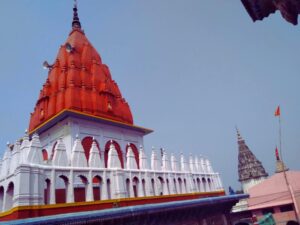
Kanak Bhawan: Dedicated to Lord Rama and his spouse Sita, this temple is also called Sone-ka-Ghar. The temple is renowned for its exquisite idols and detailed sculptures.
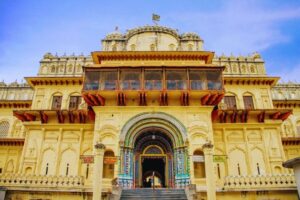
Temple Nageshwarnath: This historic temple is devoted to Lord Shiva. It is believed to have been founded by Kush, Lord Rama’s son. It’s a major place of pilgrimage for Lord Shiva’s followers.
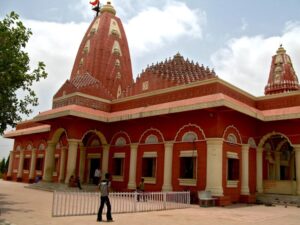
Treta Ke Thakur: This temple honours Lord Rama and is thought to be the location of the Ashwamedha Yagna. Hanuman, Lakshmana, Sita, and Lord Rama have idols in the temple.
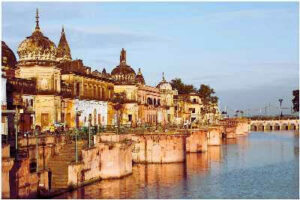
Guptar Ghat: It is thought that Lord Rama took Jal Samadhi (dipped into the river) at this ghat on the banks of the Sarayu River. It provides a calm atmosphere.
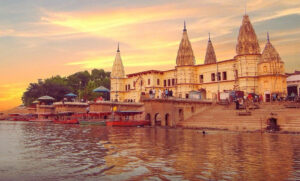
Mani Parbat and Sugriv Parbat: These two hillocks are thought to represent the ruins of Sugriva’s palace, which belonged to the Ramayana’s Sugriva, the king of the Banaras (monkeys). They are historically significant and provide expansive views of the city.
Tulsi Smarak Bhawan: Honoring the well-known saint-poet Goswami Tulsidas, the author of the Ramcharitmanas, this museum features relics from his life and creative endeavours.
Ramkatha Park: This park honours the epic Ramayana and has installations and sculptures that represent different scenes from the epic. It’s an excellent location to take a stroll and educate yourself on the Ramayana.
Kaleramji ka Mandir: Lord Bharata, the younger brother of Lord Rama, is the subject of Kaleramji ka Mandir. This historic temple is renowned for both its unusual design and its religious significance.
Ram Ki Paidi: It is a set of ghats where devotees conduct rituals and holy dips along the Sarayu River’s edge. Festivals and religious events draw the largest crowds.
Valmiki Ramayan Bhawan: The epic Ramayana was written by the renowned sage Valmiki. This museum is dedicated to him. It contains exhibits, relics, and manuscripts about the Ramayana.
Kanak Bhawan: Known for its exquisite carvings and exquisite idols, this temple honours Lord Rama and his bride Sita. It is thought that Sita’s mother gave it to her.
Ram Katha Museum: It features sculptures, paintings, and relics about the Ramayana. It’s an excellent resource for learning about the epic’s cultural relevance in India.
Swarg Dwar: In Hindu mythology, this is the entrance to heaven, and it is thought that King Dasharatha, the father of Lord Rama, ascended to heaven from this location. It’s a well-liked destination for devotee pilgrimages.
How to reach Ayodhya:
By Air: The Faizabad Airport (Ayodhya Airport), situated in Faizabad and roughly 7 kilometres distant, is the closest airport to Ayodhya. This airport may, however, only offer limited connectivity. Alternatively, you can fly into the closest major airport, located approximately 140 kilometres from Ayodhya at the Chaudhary Charan Singh International Airport in Lucknow. After that, you can travel to Ayodhya by bus or cab.
By Train: Delhi, Mumbai, Kolkata, Lucknow, and other major cities are easily accessible from Ayodhya’s railroad station, Ayodhya Junction. Through the Indian Railways website or other third-party booking sites, you can view train schedules and make online ticket reservations.
By Road:
Bus: Road connections to Ayodhya are excellent. Private and government-operated buses depart from adjacent cities such as Varanasi, Allahabad, Kanpur, and Lucknow.
cab/Car: You can travel to Ayodhya by driving your vehicle or by hiring a cab. Depending on where you’re starting from, there are several ways to get to Ayodhya, and the roads are usually well-maintained.
By River: Using the river to get to Ayodhya is another option, although less popular. Ayodhya is situated beside the Saryu River, and visitors can occasionally rent boats on the river.
Best time to travel: Since the weather is so lovely, winter (October to February) is usually regarded as the ideal time to visit Ayodhya. The temperature is comfortably warm for outdoor activities and tourism, ranging from 10°C to 25°C.
These are only a handful of the wonderful sites to discover in the spiritual and mythological city of Ayodhya. These locations signify the rich culture and tradition of the city.
©Famous India Blog. All rights reserved.
Creativity By Needinfotech